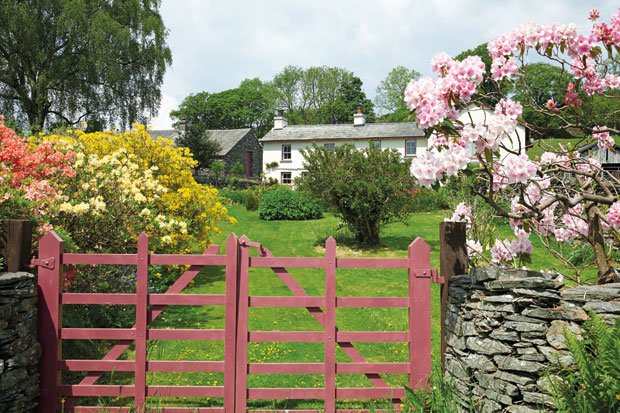It is a truism that writers of all kinds often find inspiration and solace in their gardens, as well as protection from the outside world and its demands. After all, writing is a supremely solitary business and outside influences must be subtle and uplifting, not noisy and distracting, if writers are to flourish. The Writer’s Garden is an attempt to explore this appealing idea by describing the gardens of 20 well-loved British writers, including Jane Austen, Beatrix Potter, Walter Scott and George Bernard Shaw.
The choices are largely expected — Jane Austen’s Chawton and Godmersham, Agatha Christie’s Greenway, Winston Churchill’s Chartwell, Rudyard Kipling’s Bateman’s and Walter Scott’s Abbotsford — but there are less obvious ones as well, such as John Clare’s cottage in Helpston (he is the only working gardener in this mix), Laurence Sterne’s Shandy Hall, and Charles Dickens’s Gad’s Hill Place. In truth, the inclusion of Ted Hughes’s Lumb Bank is pushing it, since he only lived there for a year, and Robert Burns’s Ellisland was frankly more farm than garden. It hardly matters. The important thing is that most readers should find several gardens that they are pleased they now know about. Probably the most obvious omission is Sissinghurst, but I don’t blame the author for thinking that its story has been told quite enough times already.
It is plain that a good few of the gardens featured were of enormous importance to their writer occupants: in particular Gipsy House, Great Missenden, where Roald Dahl lived; Shaw’s Corner, Ayot St Lawrence, ferociously gardened by George Bernard Shaw and his wife, Charlotte; and Monk’s House, Rodmell, owned by Leonard and Virginia Woolf. This book reminded me that Leonard Woolf recalled in Downhill All the Way how he refused to leave his iris planting to go into the house to hear a speech of Hitler’s on the wireless, since the irises would be flowering long after Hitler was dead.








Comments
Join the debate for just £1 a month
Be part of the conversation with other Spectator readers by getting your first three months for £3.
UNLOCK ACCESS Just £1 a monthAlready a subscriber? Log in